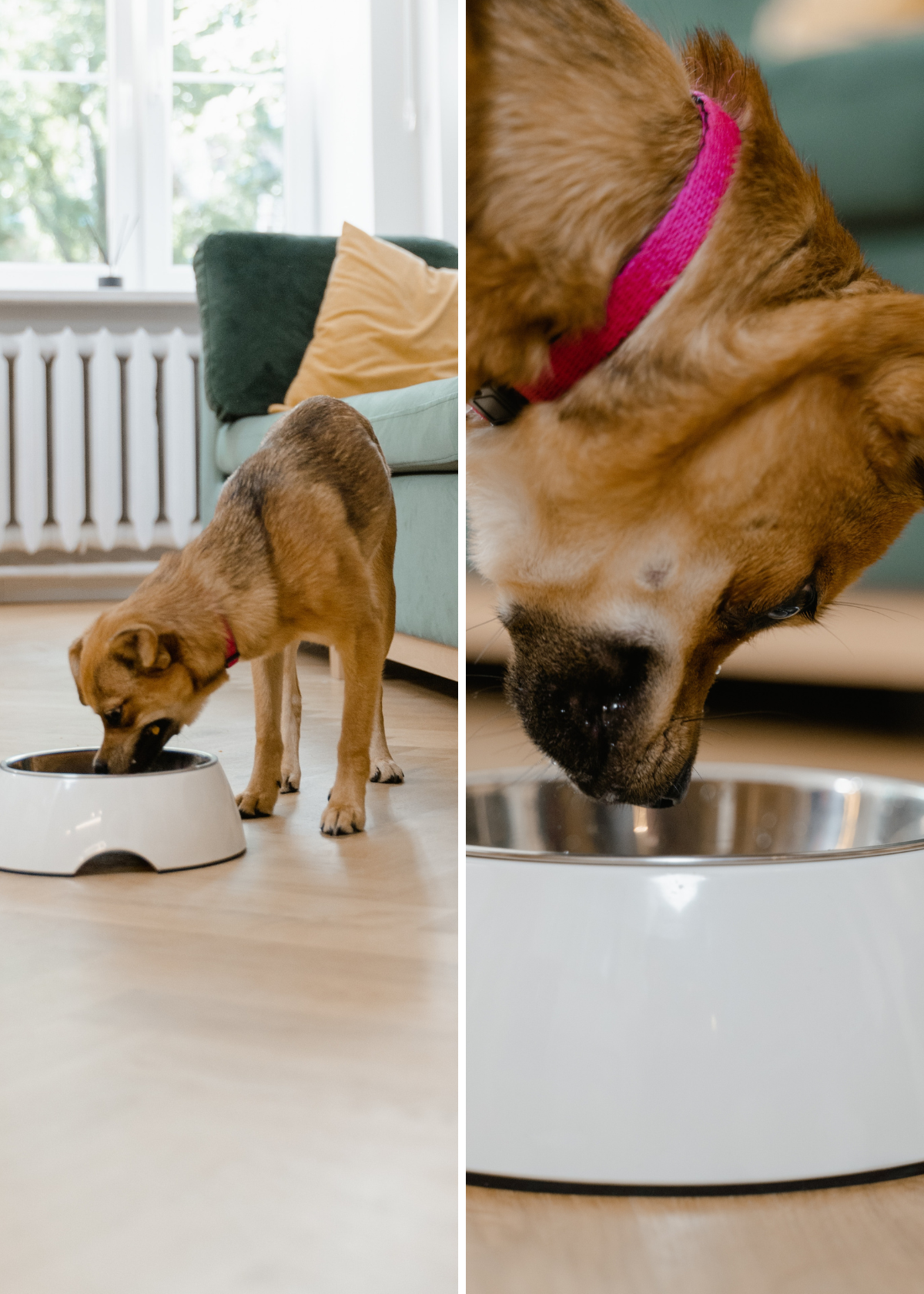Feeding our pets is one of the essential responsibilities of pet ownership. Whether you have a dog, cat, or any other pet, ensuring they receive proper nutrition is crucial for their health and well-being.
In this comprehensive guide, we will explore the three primary types of feeders: manual, automatic, and smart.
We'll delve into how each type works, their pros and cons, and help you choose the right one for your beloved furry companion.
Manual Feeders
1. What Is a Manual Feeder?
A manual feeder, as the name suggests, requires your direct involvement in the feeding process. It's the traditional method of providing food to your pet and involves you physically serving their meals.
2. How Does a Manual Feeder Work?
The operation of a manual feeder is straightforward:
- Prepare the Food: You measure out the appropriate portion of pet food manually, either with a scoop or by eyeballing it.
- Serve the Food: You place the food in your pet's bowl and present it to them at scheduled meal times.
- Monitor the Feeding: While your pet eats, you can observe their eating habits, ensure they finish their meal, and make adjustments to portion sizes or diet as needed.
3. Pros and Cons of Manual Feeders
Pros:
- Control: You have direct control over portion sizes and the types of food your pet receives.
- Bonding: Mealtime provides an opportunity for bonding and interaction with your pet.
- Cost: Manual feeders are typically more affordable upfront.
Cons:
- Schedule Dependency: You need to be present for every meal, which can be challenging for people with busy lifestyles.
- Inflexibility: It's less adaptable for irregular schedules or multiple daily feedings.
- Limited Monitoring: You can't monitor your pet's eating habits when you're not at home.
Automatic Feeders
1. What Is an Automatic Feeder?
Automatic feeders are devices designed to dispense pet food at predetermined times without your direct involvement. They provide convenience and consistency in feeding your pet, making them a popular choice for busy pet owners.
2. How Do Automatic Feeders Work?
Here's how an automatic feeder typically operates:
- Program the Schedule: You set the feeding schedule on the automatic feeder, specifying the times and portion sizes for each meal.
- Food Storage: The feeder has a food storage compartment, ensuring that the pet food remains fresh and protected from pests.
- Scheduled Dispensing: At the designated feeding times, the automatic feeder's mechanism releases the specified amount of food into your pet's bowl.
- Power Source: Automatic feeders are powered by electricity, batteries, or a combination of both. Battery backup ensures your pet won't miss a meal during power outages.
3. Pros and Cons of Automatic Feeders
Pros:
- Consistency: Automatic feeders maintain a regular feeding schedule even when you're not at home.
- Portion Control: Some models offer precise portion control, preventing overfeeding or underfeeding.
- Flexibility: You can adapt the feeding schedule to your lifestyle, including multiple daily feedings.
- Convenience: Ideal for busy pet owners or those with unpredictable schedules.
Cons:
- Initial Cost: Automatic feeders can be more expensive than manual feeders.
- Limited Monitoring: You may not be able to observe your pet's eating habits or adjust their diet in real time.
- Maintenance: Regular cleaning and refilling of the feeder are necessary to ensure it functions correctly.
Smart Feeders
1. What Is a Smart Feeder?
Smart feeders are the latest innovation in pet feeding technology. These high-tech devices combine the convenience of automatic feeders with advanced features and internet connectivity.
2. How Do Smart Feeders Work?
Smart feeders offer a range of features and functions:
- Program via App: You can program the feeding schedule and portion sizes using a smartphone app or a web interface.
- Remote Monitoring: Many smart feeders include cameras that allow you to monitor your pet's feeding habits and behavior remotely.
- Voice Control: Some models can be controlled with voice commands through virtual assistants like Amazon Alexa or Google Assistant.
- Integration: Smart feeders can be integrated into your smart home ecosystem, offering seamless control and automation.
3. Pros and Cons of Smart Feeders
Pros:
- Remote Control: You can adjust feeding schedules and monitor your pet from anywhere with an internet connection.
- Advanced Features: Smart feeders often include features like portion control, image recognition, and health tracking.
- Customization: Tailor feeding schedules and portion sizes to your pet's specific needs.
- Peace of Mind: You can ensure your pet is well-fed even when you're away for an extended period.
Cons:
- Cost: Smart feeders are typically more expensive than manual or basic automatic feeders.
- Complexity: Some pet owners may find the setup and operation of smart feeders complex.
- Dependence on Technology: Reliability depends on a stable internet connection and the functionality of the associated app or platform.
Choosing the Right Feeder for Your Pet
Now that we've explored the three types of feeders, it's essential to choose the right one for your pet's needs and your lifestyle. Consider the following factors when making your decision:
1. Pet Type and Needs
Consider your pet's size, age, and specific dietary requirements. Some pets may benefit from the advanced features of smart feeders, while others may do well with a simple automatic feeder.
2. Your Lifestyle
Evaluate your daily routine and how often you're away from home. A manual feeder may suffice if you have a consistent schedule, while automatic or smart feeders offer more flexibility for busy lives.
3. Budget
Determine your budget for a feeder, keeping in mind that smart feeders tend to be more expensive upfront but offer advanced features and convenience.
4. Technological Comfort
Consider your comfort level with technology. If you're tech-savvy and enjoy the benefits of remote monitoring and control, a smart feeder might be a great choice. However, if you prefer simplicity, a manual or basic automatic feeder may be more suitable.
Conclusion:
In conclusion, understanding the three types of feeders—manual, automatic, and smart—enables you to make an informed choice that best suits your pet's needs and your lifestyle.
Each type has its own set of advantages and disadvantages, providing varying levels of convenience, control, and technological integration. Ultimately, the ideal feeder is one that aligns with your pet's dietary requirements and your ability to maintain a consistent feeding schedule.
Whether you opt for the simplicity of a manual feeder, the automation of an automatic feeder, or the advanced features of a smart feeder, the goal remains the same: ensuring your beloved pet receives the nourishment and care they deserve.








